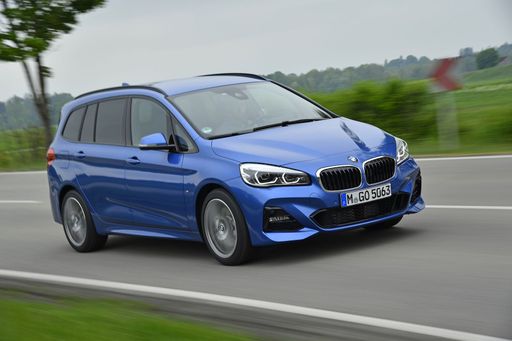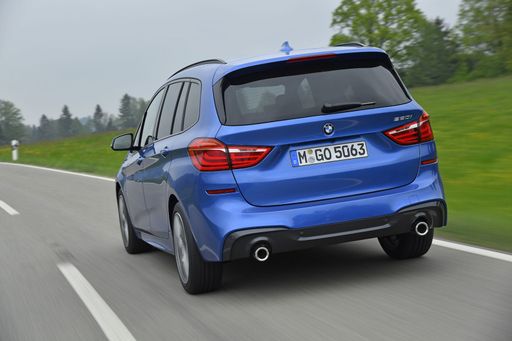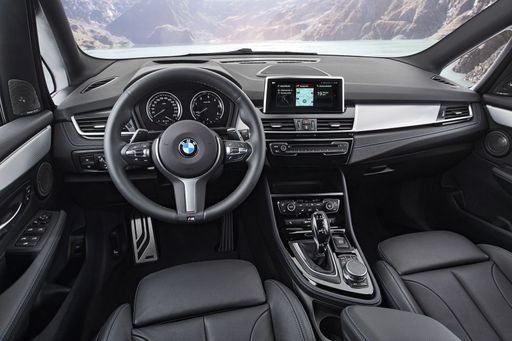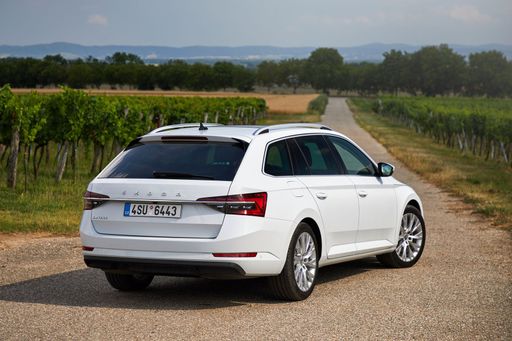BMW 2 Series Active Tourer vs Skoda Superb Combi – Differences & prices compared
Two cars, one duel: BMW 2 Series Active Tourer meets Skoda Superb Combi.
Which one wins in performance, efficiency and value for money? Find out now!
Here’s where it gets real: The technical differences in detail
Costs and Efficiency: When it comes to price and running costs, the biggest differences usually appear. This is often where you see which car fits your budget better in the long run.
BMW 2 Series Active Tourer has a a bit advantage in terms of price – it starts at 31000 £, while the Skoda Superb Combi costs 35200 £. That’s a price difference of around 4200 £.
Fuel consumption also shows a difference: the Skoda Superb Combi manages with 0.40 L and is therefore decisively more efficient than the BMW 2 Series Active Tourer with 0.90 L. The difference is about 0.50 L per 100 km.
As for range, the Skoda Superb Combi performs noticeable better – achieving up to 134 km, about 49 km more than the BMW 2 Series Active Tourer.
Engine and Performance: Power, torque and acceleration are the classic benchmarks for car enthusiasts – and here, some clear differences start to show.
When it comes to engine power, the BMW 2 Series Active Tourer has a slightly edge – offering 326 HP compared to 265 HP. That’s roughly 61 HP more horsepower.
In acceleration from 0 to 100 km/h, the BMW 2 Series Active Tourer is hardly perceptible quicker – completing the sprint in 5.50 s, while the Skoda Superb Combi takes 5.70 s. That’s about 0.20 s faster.
In terms of top speed, the Skoda Superb Combi performs slight better – reaching 250 km/h, while the BMW 2 Series Active Tourer tops out at 238 km/h. The difference is around 12 km/h.
There’s also a difference in torque: the BMW 2 Series Active Tourer pulls to a small extent stronger with 477 Nm compared to 400 Nm. That’s about 77 Nm difference.
Space and Everyday Use: Beyond pure performance, interior space and usability matter most in daily life. This is where you see which car is more practical and versatile.
Both vehicles offer seating for 5 people.
In curb weight, the BMW 2 Series Active Tourer is hardly perceptible lighter – 1545 kg compared to 1575 kg. The difference is around 30 kg.
In terms of boot space, the Skoda Superb Combi offers noticeable more room – 690 L compared to 470 L. That’s a difference of about 220 L.
In maximum load capacity, the Skoda Superb Combi performs noticeable better – up to 1920 L, which is about 465 L more than the BMW 2 Series Active Tourer.
When it comes to payload, Skoda Superb Combi slightly takes the win – 584 kg compared to 505 kg. That’s a difference of about 79 kg.
Our conclusion: The Skoda Superb Combi proves to be leaves the rival little chance and thus becomes our DriveDuel Champion!
Overall, Skoda Superb Combi is the better all-rounder in this comparison.
BMW 2 Series Active Tourer
The BMW 2 Series Active Tourer offers a blend of versatility and modern design, making it an ideal choice for drivers seeking practicality without compromising on style. Its spacious interior and advanced technology features ensure a comfortable and connected driving experience. With a focus on efficiency and performance, this vehicle stands out as a refined option in the compact MPV segment.
details @ press.bmwgroup.com
@ press.bmwgroup.com
 @ press.bmwgroup.com
@ press.bmwgroup.com
 @ press.bmwgroup.com
@ press.bmwgroup.com
 @ press.bmwgroup.com
@ press.bmwgroup.com
Skoda Superb Combi
The Škoda Superb Combi combines practicality and elegance, making it a popular choice for families and professionals alike. Its spacious interior offers exceptional comfort and ample storage, suitable for long journeys and everyday errands. Additionally, the refined design and advanced technology features ensure a sophisticated driving experience.
details @ Skoda Presse Deutschland
@ Skoda Presse Deutschland
 @ Skoda Presse Deutschland
@ Skoda Presse Deutschland

|

|
|
|
|
Costs and Consumption |
|
|---|---|
|
Price
31000 - 48000 £
|
Price
35200 - 51000 £
|
|
Consumption L/100km
0.9 - 6.2 L
|
Consumption L/100km
0.4 - 7.8 L
|
|
Consumption kWh/100km
-
|
Consumption kWh/100km
-
|
|
Electric Range
85 km
|
Electric Range
124 - 134 km
|
|
Battery Capacity
14.20 kWh
|
Battery Capacity
19.70 kWh
|
|
co2
20 - 140 g/km
|
co2
8 - 178 g/km
|
|
Fuel tank capacity
45 - 54 L
|
Fuel tank capacity
45 - 66 L
|
Dimensions and Body |
|
|---|---|
|
Body Type
MPV
|
Body Type
Estate
|
|
Seats
5
|
Seats
5
|
|
Doors
5
|
Doors
5
|
|
Curb weight
1545 - 1920 kg
|
Curb weight
1575 - 1853 kg
|
|
Trunk capacity
406 - 470 L
|
Trunk capacity
510 - 690 L
|
|
Length
4386 mm
|
Length
4902 mm
|
|
Width
1824 mm
|
Width
1849 mm
|
|
Height
1576 mm
|
Height
1482 mm
|
|
Max trunk capacity
1370 - 1455 L
|
Max trunk capacity
1770 - 1920 L
|
|
Payload
465 - 505 kg
|
Payload
497 - 584 kg
|
Engine and Performance |
|
|---|---|
|
Engine Type
Plugin Hybrid, Petrol, Petrol MHEV, Diesel, Diesel MHEV
|
Engine Type
Plugin Hybrid, Petrol, Petrol MHEV, Diesel
|
|
Transmission
Automatic
|
Transmission
Automatic
|
|
Transmission Detail
Dual-Clutch Automatic
|
Transmission Detail
Dual-Clutch Automatic
|
|
Drive Type
All-Wheel Drive, Front-Wheel Drive
|
Drive Type
Front-Wheel Drive, All-Wheel Drive
|
|
Power HP
122 - 326 HP
|
Power HP
150 - 265 HP
|
|
Acceleration 0-100km/h
5.5 - 10.3 s
|
Acceleration 0-100km/h
5.7 - 9.3 s
|
|
Max Speed
195 - 238 km/h
|
Max Speed
220 - 250 km/h
|
|
Torque
230 - 477 Nm
|
Torque
250 - 400 Nm
|
|
Number of Cylinders
3 - 4
|
Number of Cylinders
4
|
|
Power kW
90 - 240 kW
|
Power kW
110 - 195 kW
|
|
Engine capacity
1499 - 1998 cm3
|
Engine capacity
1498 - 1984 cm3
|
General |
|
|---|---|
|
Model Year
2024
|
Model Year
2024 - 2025
|
|
CO2 Efficiency Class
B, E, D
|
CO2 Efficiency Class
B, E, F, D, G
|
|
Brand
BMW
|
Brand
Skoda
|
What drive types are available for the BMW 2 Series Active Tourer?
Available configurations include All-Wheel Drive or Front-Wheel Drive.
The prices and data displayed are estimates based on German list prices and may vary by country. This information is not legally binding.
